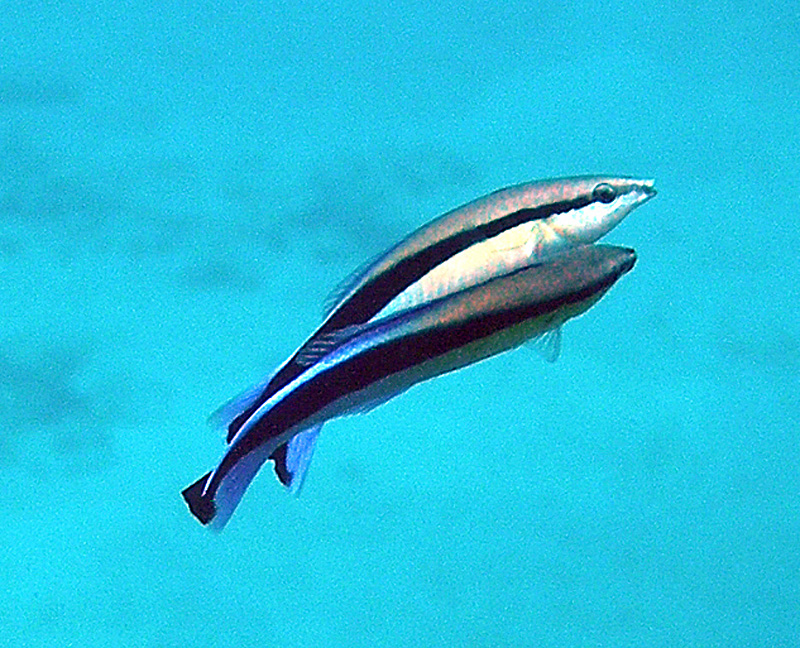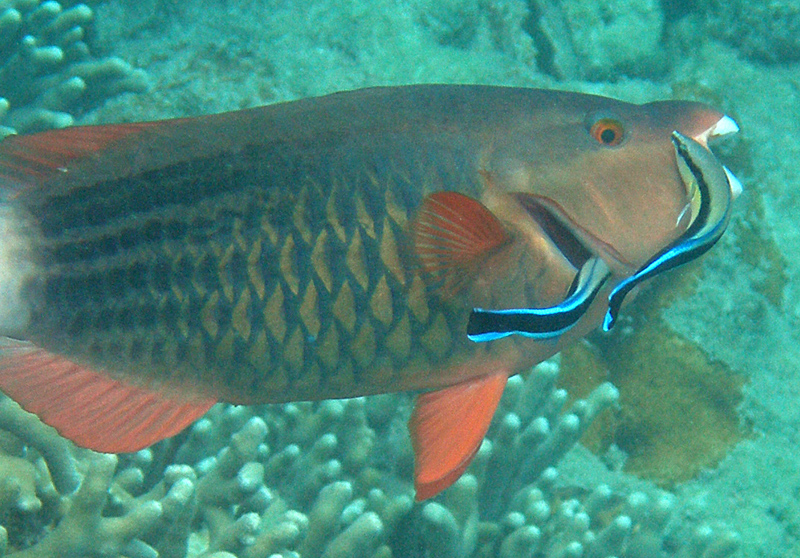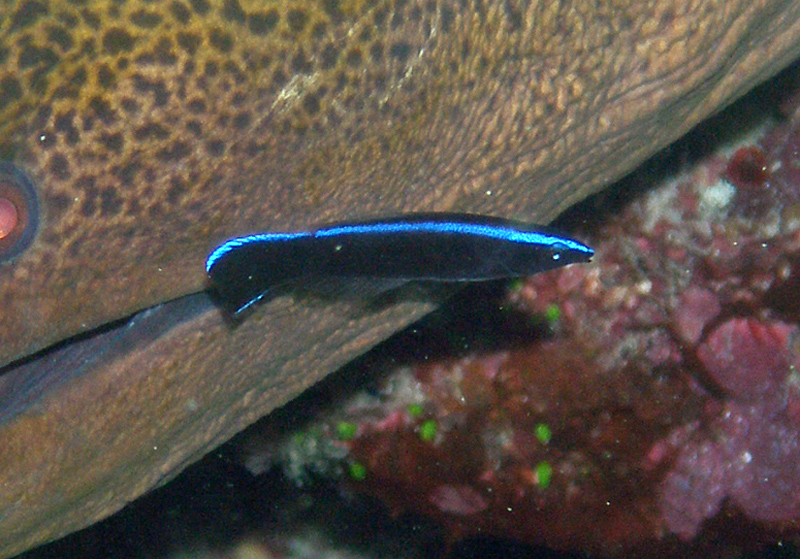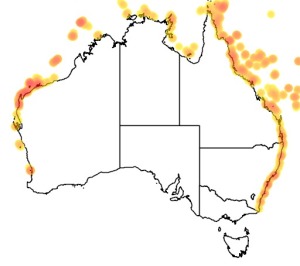Colours
Distinguishing features
A small elongate fish that swims quickly using the pectoral fins. The juvenile fish are black with a single horizontal blue stripe. The initial and terminal phase fish have a pale head, a thick black stripe running horizontally down the body, and a blue posterior and tail.
Size
- Up to 11 cm (Standard length)
Depth range
- Depth range data is not yet available.
Synonyms
Similar taxa
-
Animalia:
False Cleanerfish (species: Aspidontus taeniatus)
has mouth on underside of head, overhung by a prominent snout.
Distribution
Distribution and habitat preferences
Usually near a prominent coral bommie in areas of hard coral cover.
Can be found in most locations around the island.
Behaviour
The Common Cleanerfish has a specialised diet consisting of the crustacean ectoparasites of other reef fishes, and fish skin mucous. They swim close to the surface of the host fish and pick the parasites off with their specially developed mouthparts. The cleaner wrasse have a distinct display dance to entice other fish to "pose" for cleaning, and evidently this gives them some protection from predators, because the cleaner wrasse can be observed to clean coral trout and spotted rock cod without being eaten. The cleaner wrasse are found in small family groups of 2-6 fish, with the largest being the terminal male. They usually set up a "cleaning station" near a large coral outcrop, and it is common to see many large fishes aggregating there to take advantage of the cleaning service provided by the wrasse. Crustacean ectoparasites are very common on coral reefs, and a typical benthic feeding fish such as the Black eye thicklip may pick up 200-300 gnathid isopods in a single day of feeding, so they need to visit the cleaner wrasse regularly to keep these parasites under control. Larger wrasse are better cleaners than small wrasse, and this is reflected in the cleaning behaviour - host fish tend to approach the larger cleaner wrasse and stay with them for longer, and it is usually the cleaner wrasse which terminates the encounter. The smaller wrasse have to actively chase host fish, and the hosts stay with them for a short time and then move on. Like all wrasses, this species changes sex from female to male as they get older - all juveniles start life as females.
Web resources
References
- Abreu, M.S., J.P.M. Messias, A.C.V.V. Giacominic and M.C. Soares (2018). Estradiol shapes mutualistic behaviour of female cleaner fish (Labroides dimidiatus - Valenciennes, 1839): Potential implications of environmental disturbance. Ecotoxicology and Environmental Safety, 157: 244-248. LIRS catalog number 2241.
- Arnal, C. (2000). Ecologie comportementale de la symbiose poisson nettoyeur/ poisson client: motivations et honnêteté, Ph.D. thesis, University of Perpignan, France. LIRS catalog number 637.
- Arnal, C., O. Verneau and Y. Desdevises (2006). Phylogenetic relationships and ecolution of cleaning behaviour in the family Labridae: importance of body colour pattern, Journal of Evolutionary Biology, 19: 755-763. LIRS catalog number 1178.
- View all references




